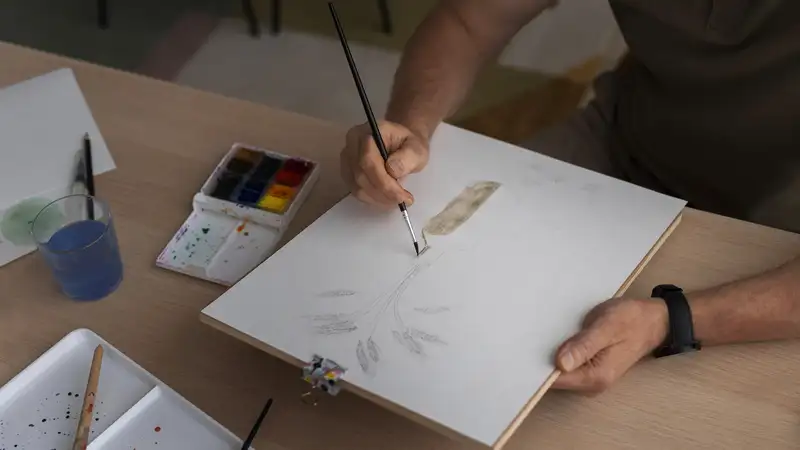
Mastering the Art of Drawing Spider-Man: A Comprehensive Guide
Spider-Man, one of the most iconic superheroes in comic book history,”drawing:7barsug8u0w= spiderman” has inspired countless artists with his web-slinging adventures and striking costume. If you’re passionate about drawing and want to capture Spider-Man’s dynamic pose and intricate details, this guide will help you refine your skills. We’ll dive into various techniques and tips to enhance your Spider-Man drawings, making sure your artwork reflects the energy and essence of this beloved character.
Understanding Spider-Man’s Design
To draw Spider-Man effectively, start by understanding his design. Spider-Man’s costume features a blend of vibrant red and blue colors,”drawing:7barsug8u0w= spiderman” with a distinctive web pattern that covers most of the suit. His eyes, outlined in black, are large and expressive, giving him a unique look that sets him apart from other superheroes.
Spider-Man’s costume also includes a spider emblem on his chest and back, which plays a crucial role in defining his silhouette. The design of this emblem varies across different versions of the character, so choose the one that best fits your artistic vision.
Step-by-Step Drawing Process
1. Sketching the Basic Framework
Begin with a light sketch to outline Spider-Man’s pose. Use simple shapes like circles and ovals to represent his head, torso, and limbs. This initial sketch serves as a blueprint, helping you establish the proportions and positioning of Spider-Man’s body.
- Head: Draw a circle for the head and add a vertical line down the center to help with symmetry.
- Torso: Sketch an oval or rectangle shape for the torso. Position it slightly tilted to reflect Spider-Man’s dynamic posture.
- Limbs: Use elongated ovals or cylinders for the arms and legs. Pay attention to the joints to ensure proper articulation.
2. Defining the Costume
Once you have the basic framework, refine the outline by adding Spider-Man’s costume details. Focus on the web pattern, which is a crucial element of his design.
- Web Pattern: Draw the web lines starting from the center of Spider-Man’s face and extending outward. The lines should follow the contours of his body, creating a three-dimensional effect.
- Emblems: Include the spider emblem on the chest and back. Ensure the emblem is symmetrical and proportionate to Spider-Man’s body.
3. Adding Details
Enhance your drawing by incorporating finer details that bring Spider-Man to life.
- Facial Features: Draw Spider-Man’s eyes, which are large and almond-shaped. Add a subtle curve at the top to capture their expressive nature.
- Muscle Definition: Illustrate the muscles and contours of Spider-Man’s body. Use shading to highlight the definition and add depth.
- Webbing Texture: To make the webbing appear realistic, draw tiny lines connecting the larger web lines. This texture adds dimension to the costume.
4. Inking the Drawing
After refining the details, use an ink pen to outline your sketch. Inking adds contrast”drawing:7barsug8u0w= spiderman” and makes your drawing stand out.
- Line Weight: Vary the line weight to emphasize different parts of Spider-Man’s body. Thicker lines can highlight the outer edges, while thinner lines can define smaller details.
- Clean Lines: Ensure your ink lines are clean and smooth. Avoid any unnecessary stray marks that can detract from the overall quality.
5. Adding Color
Coloring your Spider-Man drawing brings it to life. Use a mix of red and blue for the costume, with black for the web pattern and emblem.
- Base Colors: Apply the base colors evenly across Spider-Man’s suit. Use a bright red for the majority of the costume and a vibrant blue for the areas on his limbs and sides.
- Shading and Highlights: Add shading to create a three-dimensional effect. Use a darker red for shadows and a lighter red or white for highlights. Apply similar techniques for the blue areas.
6. Final Touches
Finish your drawing by adding any final touches that enhance”drawing:7barsug8u0w= spiderman” the overall appearance.
- Background: Consider adding a background that complements Spider-Man’s action pose. Whether it’s a cityscape or a dramatic sky, the background can add context and depth.
- Texture and Effects: Experiment with texture and effects to make your drawing stand out. Adding a subtle glow to Spider-Man’s eyes or a blur effect to his web lines can enhance the dynamic quality of your artwork.
Common Mistakes to Avoid
While drawing Spider-Man, be mindful of common mistakes that can affect the quality of your artwork.
- Proportions: Ensure Spider-Man’s proportions are accurate. Misaligned limbs or an uneven torso can make the “drawing:7barsug8u0w= spiderman”drawing appear unnatural.
- Web Pattern Consistency: Maintain consistency in the web pattern. Irregular or mismatched web lines can disrupt the visual harmony of the costume.
- Over-Inking: Avoid over-inking your drawing. Too much ink can obscure details andmake the drawing look heavy.
Tools and Materials
Choosing the right tools and materials can significantly impact the quality of your Spider-Man drawing.
- Pencils: Use a range of pencils from hard (H) to soft (B) to achieve different shades and textures.
- Inking Pens: Opt for fine-tip pens for detailed work and broader pens for outlining.
- Coloring Tools: Colored pencils, markers, or digital tools can all be effective for adding color. Choose the medium that best suits your style.
Conclusion
Drawing Spider-Man involves understanding his design, following a structured approach, and adding personal touches to make the artwork unique. By mastering the basics and paying attention to detail, you can create a compelling and dynamic depiction of this iconic superhero. Whether you’re a beginner or an experienced artist, practicing these techniques will help you capture the essence of Spider-Man and bring your drawings to life.
With dedication and creativity, your Spider-Man drawings will not only showcase his impressive abilities but also your artistic talent. Keep experimenting, stay inspired, and most importantly, have fun with your art!
I hope you find this guide helpful for creating your Spider-Man artwork! If you have any specific preferences or need further details, just let me know. See More
